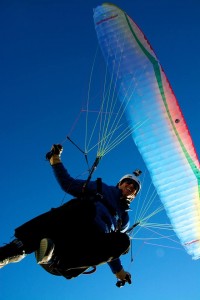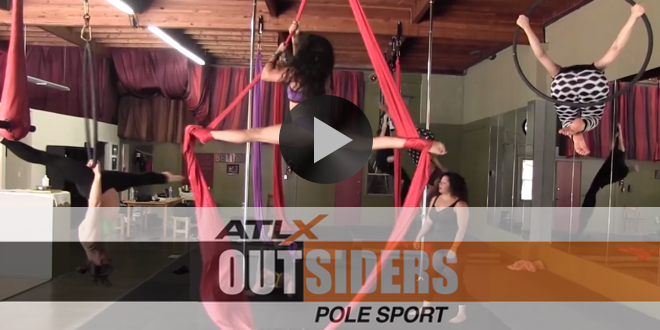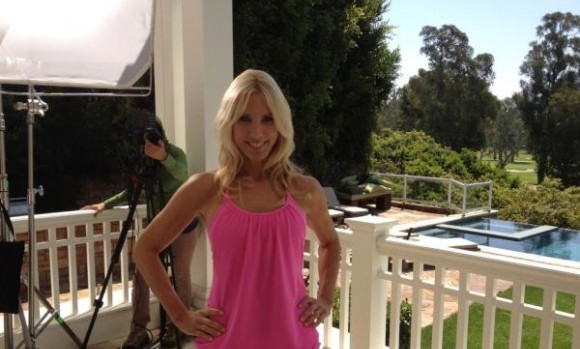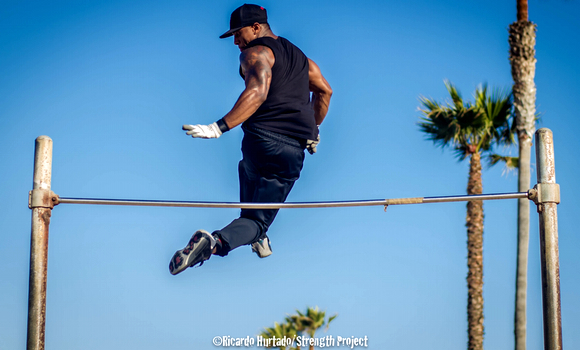By: Sheri Matthews
It’s career day at school. Kids bring their parents to talk about what they do for a living. All the usual suspects are here — the accountant, the lawyer, the HR manager. And then there’s Marshall Miller, the “Human Flight Specialist,” and suddenly the little ears perk up. Human flight specialist? What’s that?
Marshall explains that he’s a paraglider, a base jumper, the guy you might see flying over the sporting event. He pulls out a wingsuit, which is exactly what it sounds like – a suit that, by expanding the surface area of the body to increase lift, effectively turns a human into a bird. And with that, the imaginations of the kids quite literally take off. Soon the kids are trying on the suits, and suddenly a very normal career day has become, well, anything but normal. And that’s the beauty of it. What is normal? The greatest impression Marshall hopes to have on the children is that normal is what you make of it. There are no boxes into which you have to fit. With enough imagination, there is a way to do what you love. And Marshall loves to fly. Always has.
![]() Back in 2009, Marshall would’ve been at career day describing his incredibly normal life as a real estate developer. His days were like most everyone else’s. He went to work, had some success, made enough money to have nice things and take nice vacations … but the thing was, like so many of us, he lived for the weekends, when he could do what he really loved — taking friends, co-workers and vacationers base-jumping and paragliding, even giving lessons and tours.
Back in 2009, Marshall would’ve been at career day describing his incredibly normal life as a real estate developer. His days were like most everyone else’s. He went to work, had some success, made enough money to have nice things and take nice vacations … but the thing was, like so many of us, he lived for the weekends, when he could do what he really loved — taking friends, co-workers and vacationers base-jumping and paragliding, even giving lessons and tours.
“I was driven to be successful in my (real estate) work, but it was a means to end and it did not excite me quite like human flight,” Miller says. “There was no feeling to describe how much I loved (to fly).”
In 2008, not unlike many real estate professionals, Marshall had a banner year financially. Home values, spec home values, property, everything was appreciating seemingly by the minute. But as we all know by now, the market crash and subsequent recession was coming, and when it did, Marshall, like so many others, had his career flipped upside down. He needed a Plan B. But first, he and a buddy took a sort of last-hurrah, human-flying trip Switzerland, and it wound up changing their lives.
One night, while enjoying a glass of post-jump wine and tossing around the idea of capturing the flying experience by attaching cameras to their wingsuits, one of them said something along the lines of, “wouldn’t it be cool if we could do this for a job?'” A bottle of wine and a business plan later, they were ready to make their pitch to this little upstart company called GoPro Cameras.
With only eleven employees, GoPro had just come out with a hi-definition, camera designed to capture some of the wildest rides on earth, and what better way to promote such a point-of-view experience than to attach it to some of the best hang gliders, base-jumpers and skydivers in the world? It was a match made in career heaven.
Along with his best friend, Neil Amonson, a professional skier out of Tahoe, Ca. by the name of JT Holmes, and Jesse Hall from Colorado, Marshall is contracted with GoPro to promote its cameras by flying over, or dropping in on, 12 major public events throughout 2014. He can’t say where, exactly, they’ll show up, but think big. Think Super Bowl. Think World Series. Think about those crazy guys you’ve seen flying over, or parachuting into, boxing matches and football games, and imagine actually getting paid to do it.
“I never would’ve dreamed that I could make this into a career,” Miller says.

In talking to Marshall, there is no denying how much fun he’s having. But as is the case with anything worth doing, it’s not all fun and games. This is dangerous stuff, after all, and there is a lot of hard training going on behind the scenes. Marhsall spends countless hours staying in shape by running mountain trails and putting himself through CrossFit workouts, and he credits yoga as being one of the most integral aspects of both his life and career.
“In yoga, I hear the instructor and the sounds around me. I feel the edge of where the mat meets the floor, yet I am completely focused on my breathing, my weight, and how my body feels,” Miller says. “A minute to myself in yoga is similar to the minute I take before every single jump. I am aware of the air, the wind, the mountains around me, but I feel my breath and weight.”
Marshall treats each jump as if it’s his first, all the while knowing that if he doesn’t properly respect the responsibility of what he’s doing by paying the utmost attention to detail, it could also be his last. If he’s base-jumping off a cliff in a wingsuit, his head can’t be too high, or too low. He must be in perfect position to give his suit the ability of flight.
“It bothers me more than anything to be labeled as an adrenaline junkie,” Miller says. “That sounds like someone who is reckless.”
Suffice it to say, Marshall is not reckless. He has a wife and two children, and the risk of what he does is not something they ignore. It’s talked about. Understood. Over the last ten years, he has lost just shy of ten friends, people that his kids knew, people who had been in his home, to flying accidents.
“It’s an uncomfortable conversation (to have),” he says. “That’s why I take pride in making sure I am always as safe as possible. Athleticism over adrenaline every time. Complacency will kill you. I have a tremendous amount of respect for nature and my team. We must push our egos aside and treat every jump as our first jump. Most people who skydive or jump, they do it once to get it out of their system. I don’t look at it as an adrenaline rush. It’s my job, a skill, and I am very dedicated to it.”
 ATLX The only sports entertainment television and digital media network fully devoted to everyday athletes, athletic lifestyle and athletic culture.
ATLX The only sports entertainment television and digital media network fully devoted to everyday athletes, athletic lifestyle and athletic culture.




